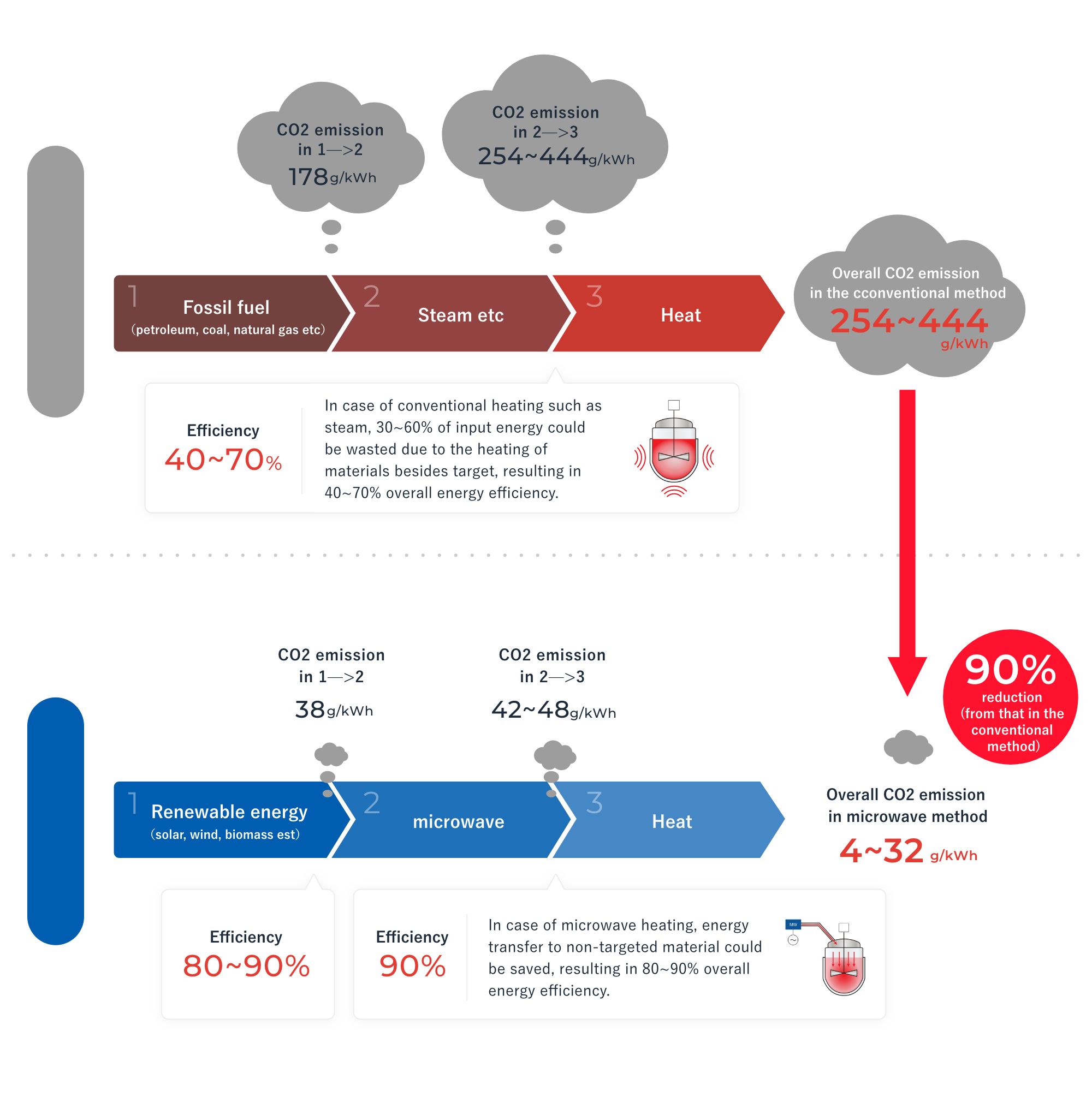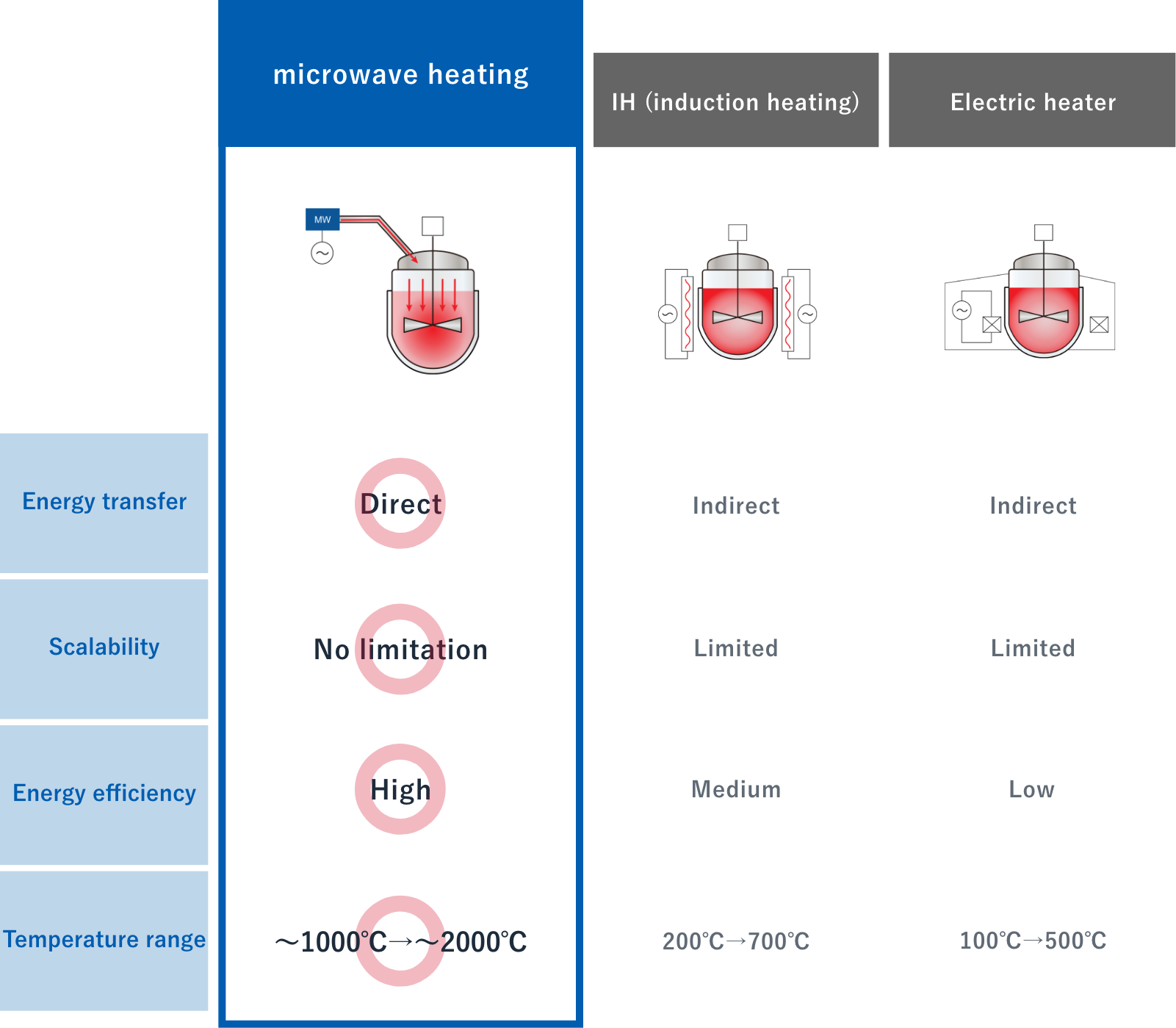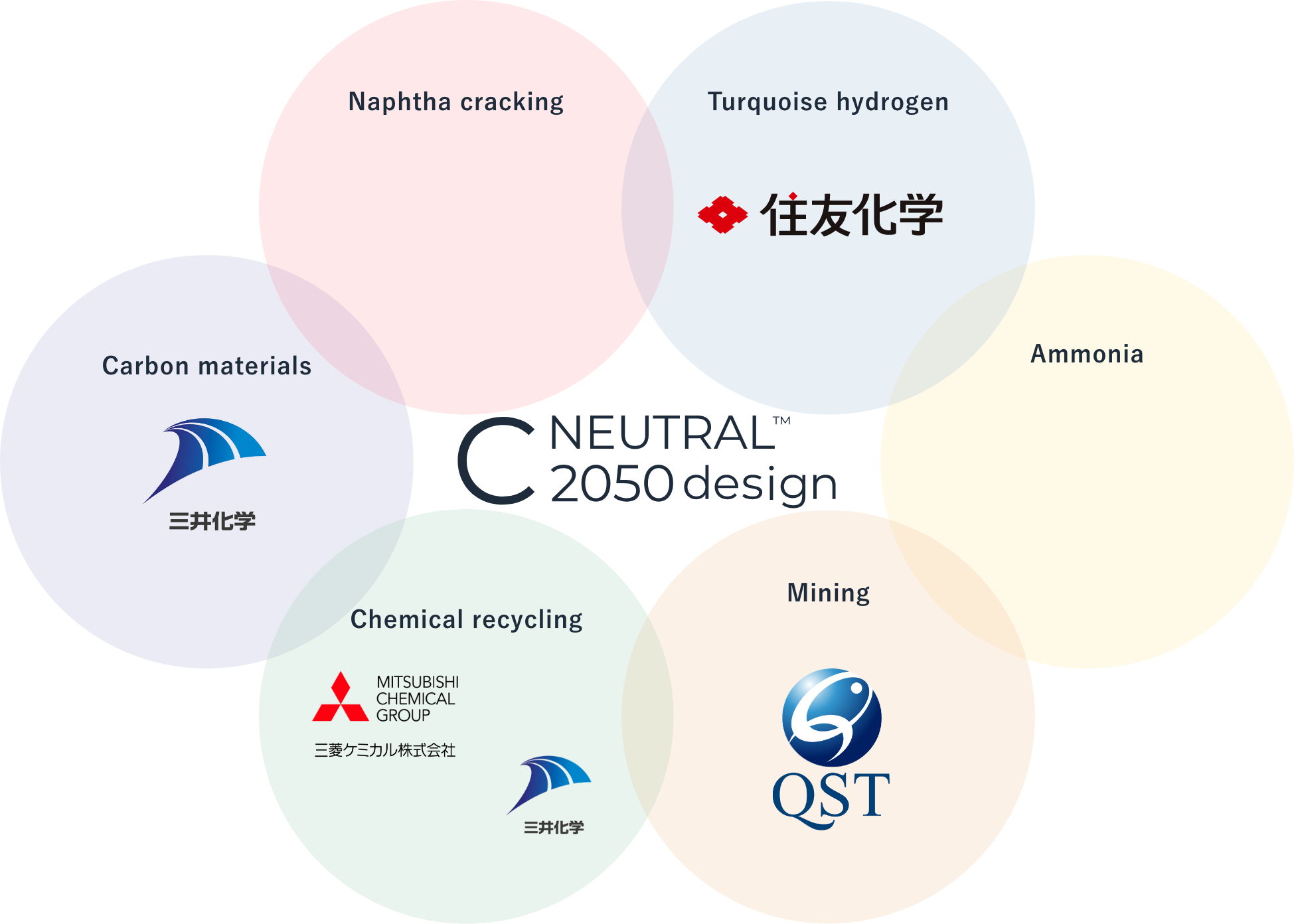At MWCC, we are promoting microwave process, to drive our initiative and concept for carbon neutrality,

R&D
Infrastructure

At MWCC, we are promoting microwave process, to drive our initiative and concept for carbon neutrality,

Read on to discover
why microwave process is needed to achieve carbon neutrality, and what impact the process will have on the industrial sector.
The industrial sector – particularly manufacturing – is known for its high CO₂ emissions.
This is because the majority of processes still rely on fossil fuels.
It is generally recognized that electrification (i.e., a shift to electricity-based processes) is necessary to reduce CO₂ emissions… but effective solutions have not yet been put in place.
Chapter 01
Q.How can microwaves contribute to carbon neutrality?
A. When combined with the microwave process, electrification via renewable energy sources reduces CO2 emissions by 90% over conventional methods.

ColumnThe value of microwave process
The introduction of carbon pricing, whereby companies are taxed according to
the carbon they emit, means that the value of the microwave process has increased
due to the contribution they make to protecting the global environment.
This technology is expected to be a key solution for carbon neutrality,
not only because it reduces capital expenditure and business running costs,
but above all because it cuts CO2 emissions by 90%.

Chapter 02
Q.What areas and/or processes will you be focusing on?
A. We will focus our efforts on expanding into petrochemicals, an area with particularly high CO₂ emissions, and mining.
It is precisely in these sectors, which have high CO₂ emissions and so are essential for achieving carbon neutrality, that we can make an impact on industry by replacing their processes with microwaves.

ColumnDifferences from other means of electrification.
We have demonstrated the value of microwaves above, but other electrification processes are available,
such as induction heating (IH) or electric heaters.
What differentiates microwaves from the others is its high energy efficiency
because it activates the target material by acting directly on its molecules.
That’s why equipment can be made more compact and cost-effective.

Chapter 03
Q.How much benefit would we see from installing microwaves?
A. We have seen CO₂ emissions reduced by approximately 90%, and energy equivalents by approximately 70%.
Here is an example from a pilot test implementation we performed using microwave process. We can see that the use of microwaves significantly reduces both CO₂ emissions and energy equivalents.
Chapter 04
Q.Do you have any ongoing projects?
A. We already have started working in partnership with some global companies and R&D organizations.
We already have several projects running simultaneously based on the advantages of microwaves and are working on a wide range of areas as shown in the diagram below.
Our vision is to make a significant contribution toward achieving carbon neutrality, by making electrification and microwave processing the standard method for the industrial sector.

As you have seen,
microwave process is a technology capable of
making significant impact
on the environmental problems facing the world and contributing
to the future of our beautiful planet.
Next contents